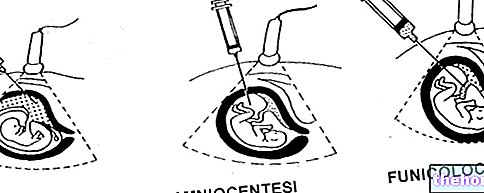Today we will talk about TRIGLYCERIDES; we will explain WHAT THEY ARE and how they are RELATED to the HEALTH of OUR BODY.
TRIGLYCERIDES are extremely common fats in nature. They make up a large part of animal adipose tissue, vegetable lipid reserves and, for humans, make up 98-99% of total dietary lipids. Triglycerides perform a very important ENERGETIC function and provide about 9kcal per gram.
They too, like all other SIMPLE lipids, are compounds called TERNARI, as they contain ONLY CARBON, HYDROGEN and OXYGEN atoms.
Triglycerides are formed by EXTERIFICATION (ie a type of chemical bond) of a molecule of GLYCEROL and three molecules of FATTY ACIDS; the latter, which can be long, medium, short chain and can ALSO contain one or more double bonds, represent the most energetic portion of the molecule. The chemical structure of triglycerides makes them extremely similar to a "comb" or a capital letter "E".
In addition to the "caloric" function, fatty acids also have the power to affect, both positively and negatively, the metabolism of those who consume them. On the contrary, glycerol, while having an essential role in maintaining the chemical-physical STABILITY of food, has a much lower caloric importance.
The inverse reaction to EXTERIFICATION, that is the splitting of fatty acids from glycerol, is called HYDROLYSIS and, in addition to totally dividing the molecule, can determine intermediate compounds such as DI-GLYCERIDES (with two fatty acids and a glycerol) or MONOGLYCERIDES (with a fatty acid and a glycerol).
Finally, triglycerides can be defined PURE or MIXED; pure if they contain fatty acids of the same type, mixed if they contain different fatty acids.
Triglycerides are present in all tissues of the human body with extreme prevalence in the subcutaneous and visceral ADIPOSE, which represents a real storage reserve.
The triglycerides contained in food, once BREAKED DOWN into fatty acids and glycerol FOR DIGESTION, are ABSORBED by the intestinal muscle and SYNTHESIZED again to enter the circulation.
NOT being soluble in water, triglycerides are transported in the lymph and blood by means of special LIPOPROTEINS. When they reach the "target" tissue these are freed from their "carriers" and hydrolyzed again to freely enter the cells; within the latter, fatty acids can be immediately used to produce energy or recomposed to be stored in the form of a reserve. All the processes of hydrolysis and synthesis of triglycerides, from the digestive phase to that of storage in the cells, are MEDIATED by special enzymes able to bind (or esterify) and split (or hydrolyze) the bonds between glycerol and fatty acids.
Triglycerides can also be SYNTHESIZED by the human body from other substrates such as: ethyl alcohol, glucose and, directly or indirectly, some amino acids. This metabolic "saving" function is regulated by certain hormones and IMPLEMENTED "mainly" by the LIVER, an organ responsible for managing certain energy needs of the body. In practice, when fatty acids, glucose, amino acids and ethyl alcohol are present in the blood in EXCESS, the liver captures them and transforms them into triglycerides, which then retains or "sends" to the adipose tissue by means of the famous lipoproteins of transport.
As we have already mentioned, triglycerides fluctuate in the blood thanks to specific molecules called LIPOPROTEINS. Without going into too much detail, which is the subject of another lesson in itself, let's say that these structures represent a sort of "courier" for the transport of various types of lipids which, in addition to triglycerides, also include cholesterol. Not surprisingly, LDL and HDL lipoproteins are also improperly called BAD CHOLESTEROL and GOOD CHOLESTEROL.
Lipoproteins are MADE "more or less" like A protein SHELL containing fats, of which the outer hydrophilic layer allows them to be solubilized in plasma. Among them, lipoproteins differ in:
- Destination of transport, to the suburbs or to the liver
- Type of load CARRIED, if mainly cholesterol or triglycerides, which determines the density
- Type of APOproteins on the shell which, acting as a specific KEY, open an equally specific receptor similar to a LOCK
- Beneficial or evil power in case of excess in the blood.
- KILOMICRONES: which are synthesized in the intestine; have the purpose of transporting the fats contained in food to the tissues, first crossing the lymphatic circulation and then the bloodstream
- and the VLDL, translated Very Low Density Lipoprotein, or VERY LOW Density Lipoproteins: they are synthesized in the liver and have the function of conveying the fats DA LI to the tissues through the blood. As the VLDL "unload" the triglycerides become first IDL and then LDL.
It is well known that high triglycerides in the blood are classified as DYSLIPIDEMIC HYPERLIPEMIA, therefore an indicator of BAD HEALTH. These have a maximum recommended value of 199 milligrams per deciliter of blood, beyond which (up to 499mg / dl and then over 500mg / dl) they can be defined HIGH and VERY HIGH.
An excess of triglycerides in the blood, called HYPERTRIGLYCERIDEMIA, seems to be related to thrombosis, coronary heart disease, angina pectoris and heart attack, which is why this condition must be considered as a potential risk factor for death or permanent disability.
But, ultimately, what causes the PATHOLOGICAL increase in blood triglycerides?
The excess of triglycerides in the blood can have various triggering causes, independent, unique or (more frequently) COEXISTENT.
First of all, we specify that there are extremely predisposing GENETIC causes. Some are very serious, others less incisive; obviously, the level of danger of hypertriglyceridemia also determines the choice of ANY drug therapy and affects the effectiveness of the other systems.
In practice, a hypertriglyceridemia having a STRONG genetic basis will DIFFICULTY respond satisfactorily to a therapy based ONLY on diet and regular physical activity; on the contrary, when the causes are attributable ONLY to lifestyle or to a SLIGHT genetic predisposition, the nutritional and motor intervention can be VERY USEFUL and even decisive.
As can be deduced, the other predisposing factors for hypertriglyceridemia are: diet and level of physical activity. With regard to nutrition, remember that triglycerides in the blood increase mainly due to:
- Caloric excess
- Excess of carbohydrates and especially with a high glycemic index
- Excess of ethyl alcohol
- e Deficiency of omega-3 fatty acids in association with one or more of the above factors
Some think that the increase in blood triglycerides is attributable to a diet high in fat ... in fact, these have very little impact and the excess carbohydrates and ethyl alcohol are more harmful!
It is also important to emphasize that, very often, those who suffer from hypertriglyceridemia due to dietary or lifestyle causes have some liver enlargement due to the ACCUMULATION of triglycerides inside. This condition is called fatty liver STEATOSIS.
Other predisposing factors for hypertriglyceridemia and independent of the mechanisms of those mentioned above are:
- Overweight or obesity
- Use of estrogen-progestin drugs
- BETWEEN DIABETES MELLITUS TYPE 2
- Hypothyroidism.
1. Reduce overweight
2. Moderate all portions, therefore the load and the glycemic index of meals
3. Eliminate ethyl alcohol
4. Significantly increase the intake of omega 3 fatty acids, which help reduce triglycerides
5. IF POSSIBLE, take omega 3 food supplements
6. Practice AEROBIC motor physical activity every day.
Since this is a metabolic disease, if the condition has persisted for several years or is associated with other risk factors such as diabetes, hypertension, high cholesterol and overweight, it is advisable to take all useful measures to moderate the overall cardio-vascular risk.



























